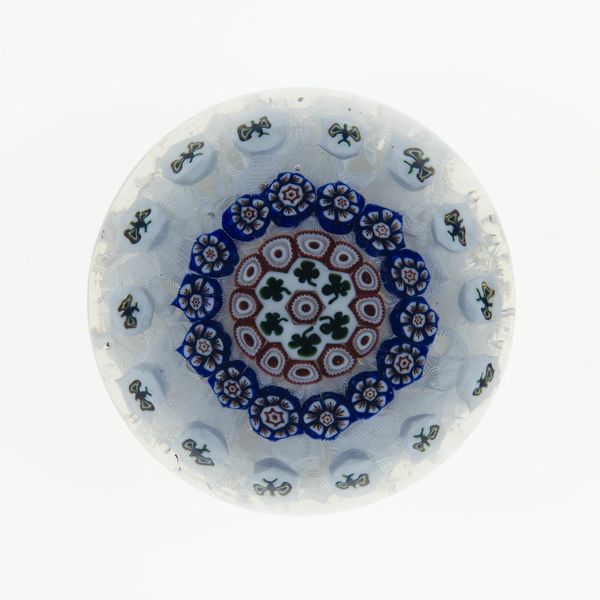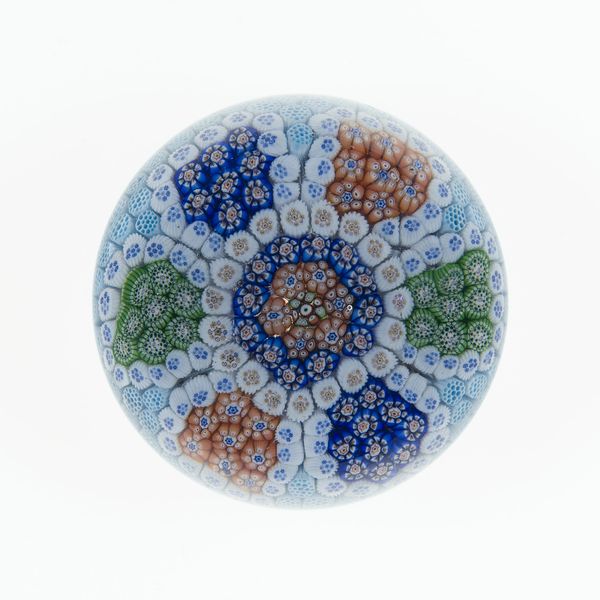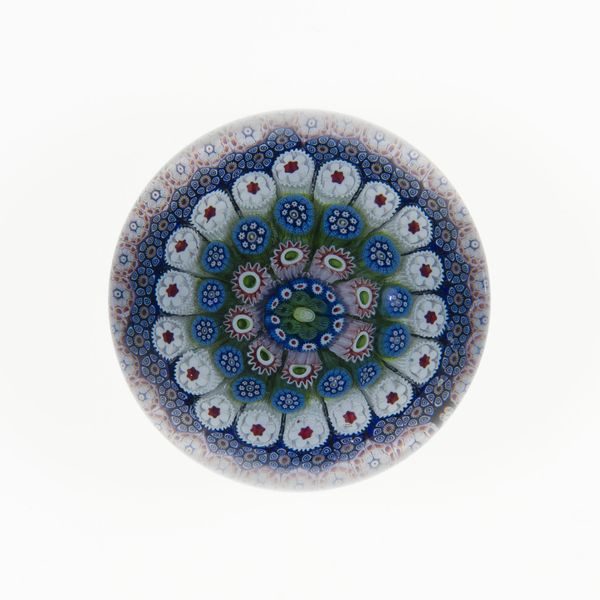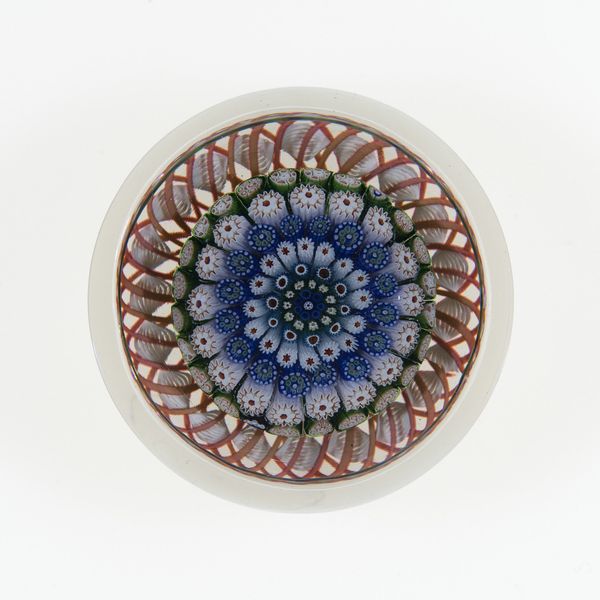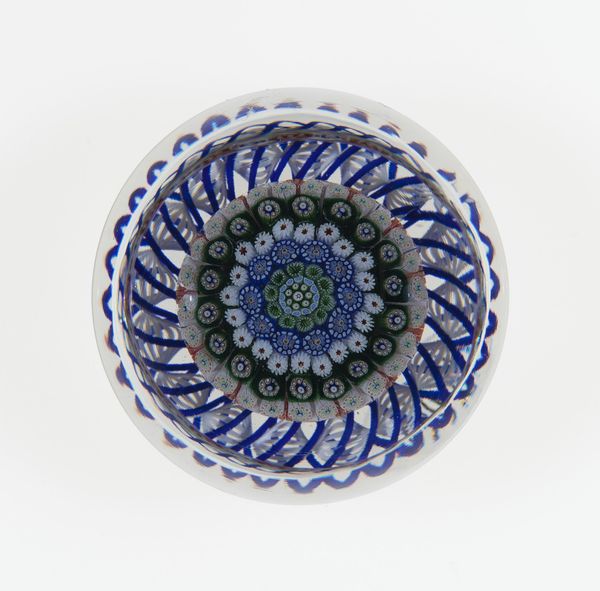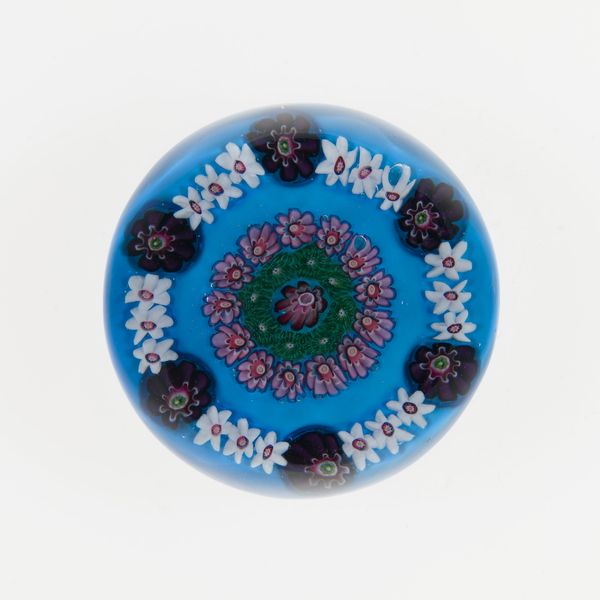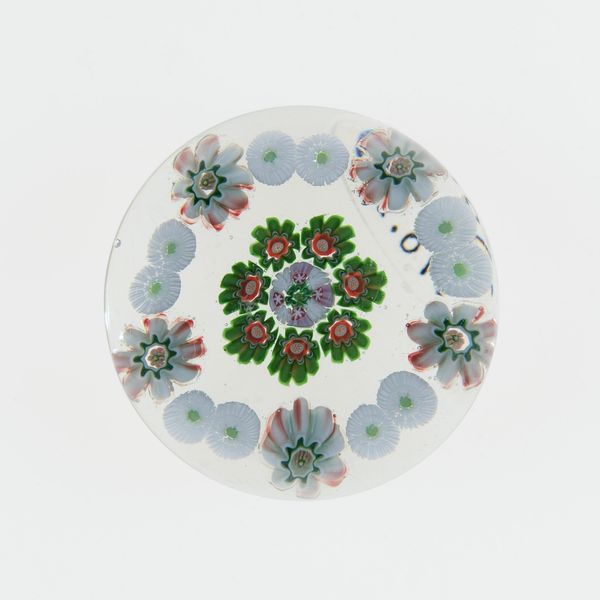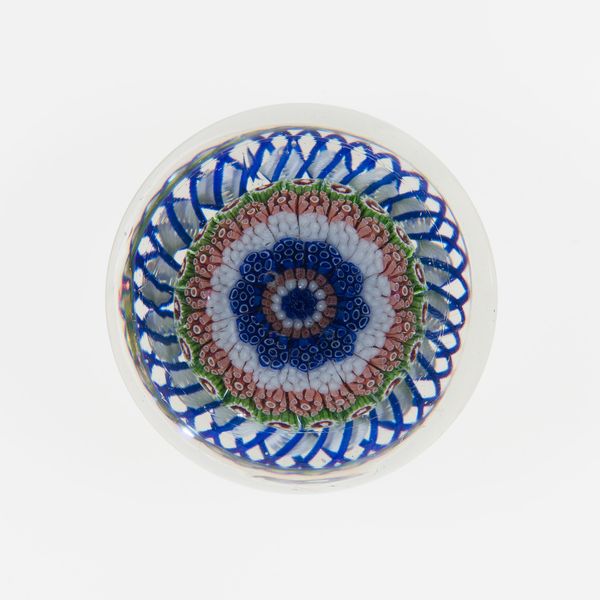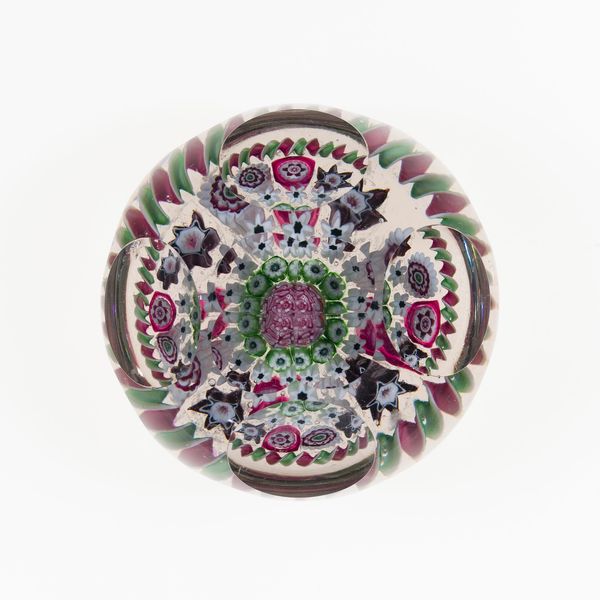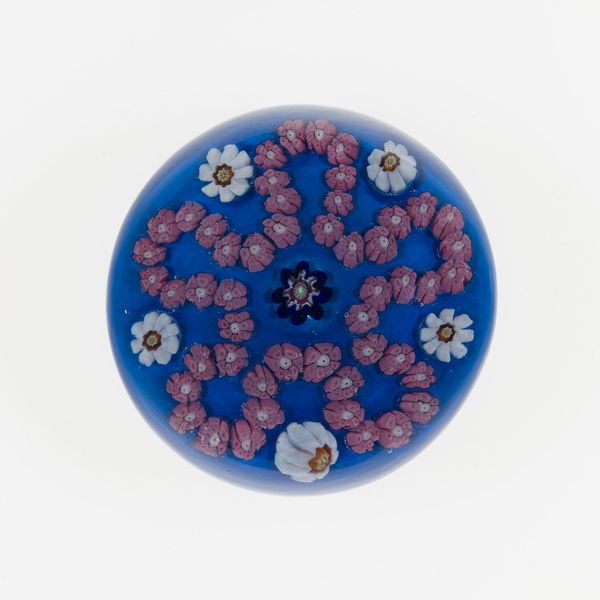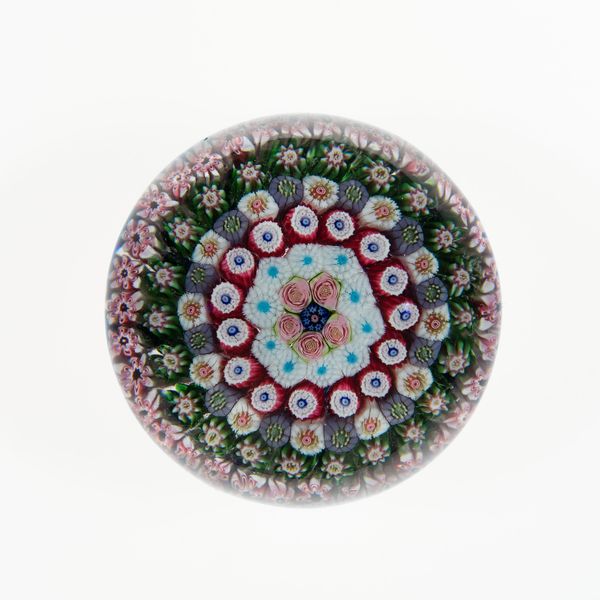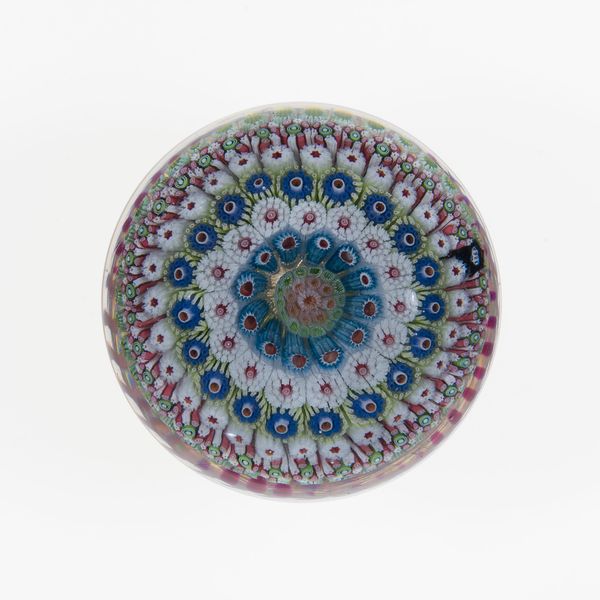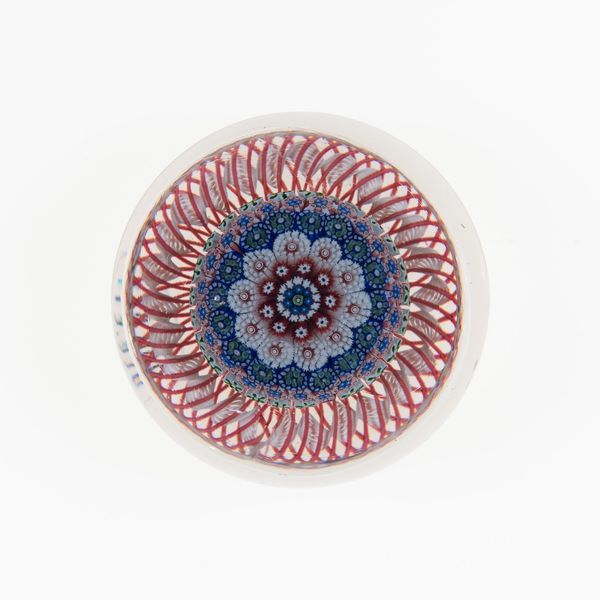
glass
#
glass
#
geometric
#
decorative-art
Dimensions: Diam. 7.7 cm (3 1/16 in.)
Copyright: Public Domain
Curator: Ah, yes, the Clichy Glasshouse Paperweight, dating roughly from 1845 to 1860. It’s made of multiple kinds of glass and currently resides at the Art Institute of Chicago. Editor: It's like peering into a miniature cosmos! I'm immediately struck by the sheer density of pattern, that kaleidoscopic effect. So contained, so neat. Is it just me, or does it feel a bit like looking at preserved Victorian ambitions? Curator: That's a wonderfully evocative observation. I see that density and containment as reflecting broader social control and domestic ideals from that era, too. The rise of decorative arts coincided with a push for organized interiors, reflecting a regulated society. Editor: I hadn’t thought of it that way, that’s a great point. But look at the craftsmanship— the repeated motifs feel almost mathematically precise, yet they’re softened by the light refracted through the glass. It is kind of the epitome of 'pretty,' isn't it? Almost unsettlingly perfect. I wonder if they served any function besides being ornaments of decor? Curator: Initially utilitarian, yes—to hold down papers before the age of, shall we say, digital disruption. But their rapid embrace across social classes shifted their significance. Owning such an object soon became a statement of taste, a subtle marker of sophistication available even to those with less expansive means. We could say they democratized beauty, in a way, which made them a target for satirists! Editor: Ha! Like a Victorian fidget spinner, but loaded with symbolic baggage. Does it make you reflect about how social classes consumed beauty? Curator: Definitely! The glasswork in this paperweight became a vehicle, through the proliferation of decoration, for expressing anxieties about wealth, display, and belonging within that complicated Victorian framework. Its survival reflects its power to carry such weight – metaphorically, of course. Editor: I love thinking about this little microcosm holding such enormous weight. Looking into its geometry I’m left imagining all those hands working, reflecting, and holding a fragment of human expression forever! Curator: I agree; it reminds us that even the smallest object can mirror profound social forces and reveal unseen perspectives into our complex past.
Comments
No comments
Be the first to comment and join the conversation on the ultimate creative platform.
